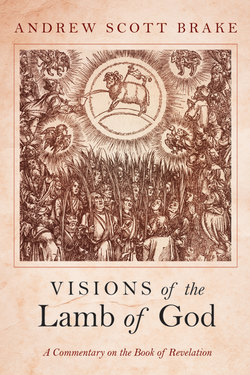Читать книгу Visions of the Lamb of God - Andrew Scott Brake - Страница 5
На сайте Литреса книга снята с продажи.
Preface
ОглавлениеMy interest in the “revelation of Jesus Christ,” the first words of the book of Revelation and the subject of this commentary, began when I was a child. I have a vivid memory, at six years old, of singing a song in my church about the second coming of Jesus. “Ten and nine, eight and seven, six and five and four; the countdown’s getting closer every day. Three and two coming through . . .” I don’t remember the rest of the song, but it began a years-long search for answers that lasted into high school, trying to make sense of the charts hanging on the walls and the occasional prophesy conferences. Like many other churches in the 1970s, my church was thoroughly dispensational, and so was I.
That is, until I was a sophomore at Wheaton College, sitting in Dr. Alan Johnson’s class on Revelation. Dr. Johnson was asking us a question about the background to a particular passage in the book. When no one could answer, he graciously and properly rebuked us all for not having the adequate knowledge of the Old Testament that was required for understanding Revelation. That class opened my eyes. I realized there were other interpretations besides those I’d been taught in my church back home (several of which are noted in the introduction that follows.) I also realized how instrumental understanding the Old Testament is for interpreting the New Testament correctly.
My fascination with and growing love for the last book of the New Testament grew even more deeply when I started to focus on the central character of the text. No, I’m not talking about the charts, predictions, or symbols, though there are many.
The central character of the text, and indeed the central character of all of life, is the Lamb of God who sits on his throne. The Lamb of God himself became the important interpretive key for me, not only as I preached through a series during my ministry as a senior pastor in Ohio, but throughout my own personal and devotional study as well.
In 2016, I taught a course at Jaffray Bible Seminary in Makassar, Indonesia, called Apocalyptic Literature: Daniel and Revelation, as part of our MA in Biblical Studies. There were about seven students in the class. I spent the bulk of the year before preparing myself to teach and to handle any questions that students might have. I had been teaching a class on ecclesiology and eschatology for about six years, so the subjects of the millennium, the timing of the second coming of Christ, and the important role of the Lamb of God were fresh in my mind.
What started out as rough English notes for an Indonesian group of students became a rough draft for a commentary at their insistence. This is the fruit of that study, but not just of that year; rather, this work is a culmination of my adoration of the Lamb of God, who takes center stage in Revelation. My hope is that the reader will see the Lamb too, in all his glory, honor, power, and might, and that the church is drawn deeper into a holy expectation of the Lamb’s glorious return.
